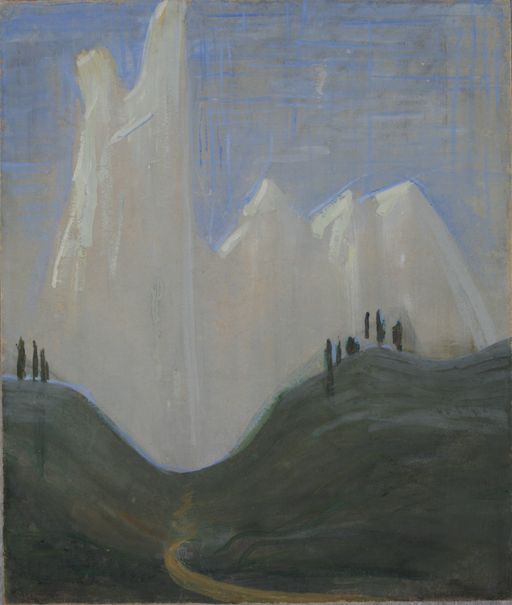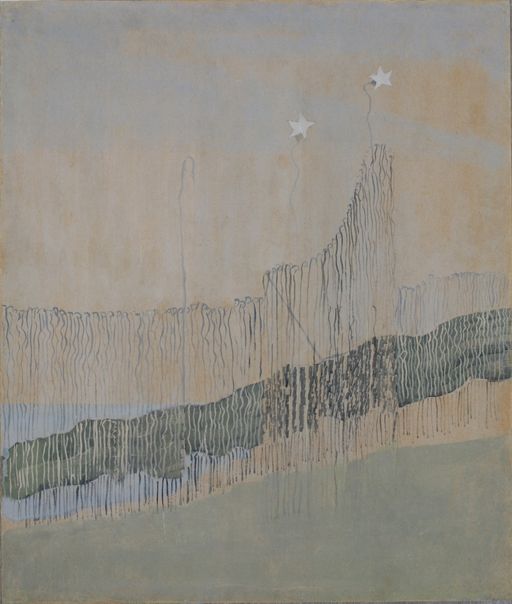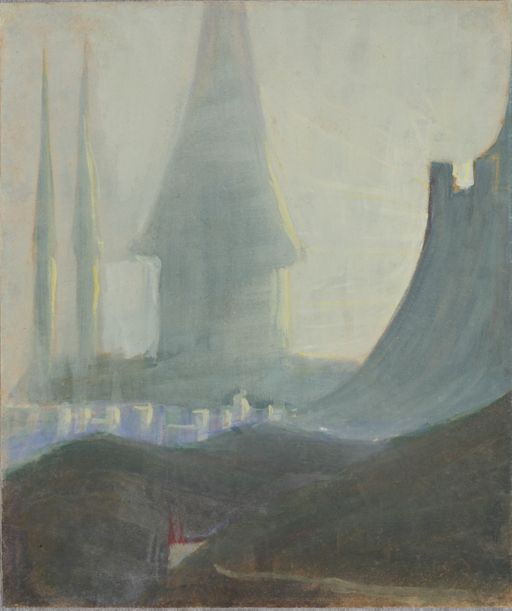My Road. Triptych.
Its central piece is clearly the dominant part of the triptych. It is a unique manifestation of the author's thinking, as both an artist and a composer. Čiurlionis perceives the ideal personality as a multifaceted being “who feels and understands everything and seeks to find truth, virtue and beauty.” (Čiurlionis M.K. Apie muziką ir dailę. Vilnius: Valstybinė grožinės literatūros leidykla, 1960, 82). The need for a strong ideal and an understanding of the artist's mission as well as his sense of responsibility is expressed through the language of artistic images. The horizontal foreground of the painting seems to represent the distance travelled, and the vertical background reflects Čiurlionis' spiritual destination. Abound with lyricism, perhaps even musicality, this painting clearly stands out from the contrasting compositions at its sides. The latter are more epic in nature and offer more narrative elements.
The first painting is an abstract landscape. Čiurlionis succeeded in creating an impression of a vast and magnificent space. The distinctive shape of the mountaintop is suggestively anthropomorphic, but also gives rise to various other associations. It resembles a cloaked figure raising an arm, a wing or even holding a harp...
This same line of movement – the curve rising upwards to the right – is repeated both in the central and the third paintings, in the tower parapet at the right.
This triptych is exhibited in Museum Belvédère, Heerenveen, Netherlands from 2024-02-24 until 2024-06-08.



